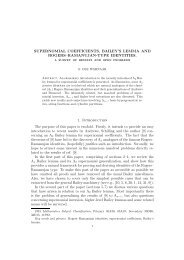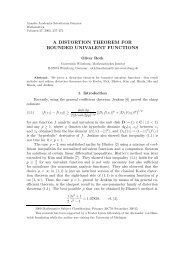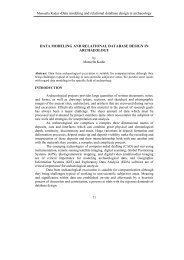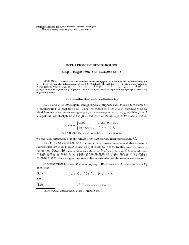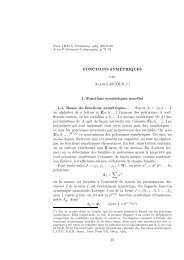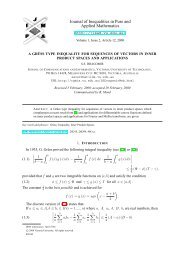CHAPTER 6 TWO-COLORED WALLPAPER PATTERNS 6.0 ...
CHAPTER 6 TWO-COLORED WALLPAPER PATTERNS 6.0 ...
CHAPTER 6 TWO-COLORED WALLPAPER PATTERNS 6.0 ...
You also want an ePaper? Increase the reach of your titles
YUMPU automatically turns print PDFs into web optimized ePapers that Google loves.
glide reflection along L 2<br />
reverses colors as it maps B to C but<br />
preserves colors as it maps A to D. (An important lesson drawn out<br />
of this example that you should keep in mind throughout this chapter<br />
is this: whenever you check a reflection or glide reflection axis for<br />
consistency with color, make sure that you look both at motifs on or<br />
‘near’ that axis and at motifs ‘far’ from that axis -- “far” and<br />
“near” depending on the fundamental (repeated) region’s size.)<br />
<strong>6.0</strong>.2 The smallest rotation angle. As in the case of one-colored<br />
wallpaper patterns (chapter 4), the most important step in<br />
classifying two-colored wallpaper patterns is the determination of<br />
the pattern’s smallest rotation angle; again, coloring may eliminate<br />
certain rotations by rendering them inconsistent with color, and it<br />
is appropriate to state here that coloring may only preserve or<br />
increase the smallest rotation angle. As an example, the<br />
following two colorings (figures 6.2 & 6.3) of the p4g pattern in<br />
figure 4.57 do increase the smallest rotation angle consistent<br />
with color from 90 0 to 180 0 (color-reversing) and 360 0 (none),<br />
respectively; and this change most definitely affects our visual<br />
perceptions of these ‘new’ wallpaper patterns:<br />
Fig. 6.2



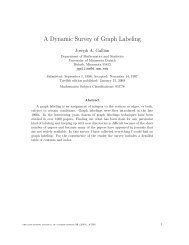


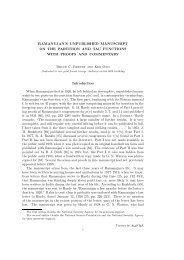
![(.,t ] and [s, .) , where [s,t ] = {s' GT; s ¤ s' ¤ t} , (.,t ] = {s' GT; s' ¤ t} and ...](https://img.yumpu.com/43303393/1/184x260/t-and-s-where-st-s-gt-s-a-s-a-t-t-s-gt-s-a-t-and-.jpg?quality=85)
